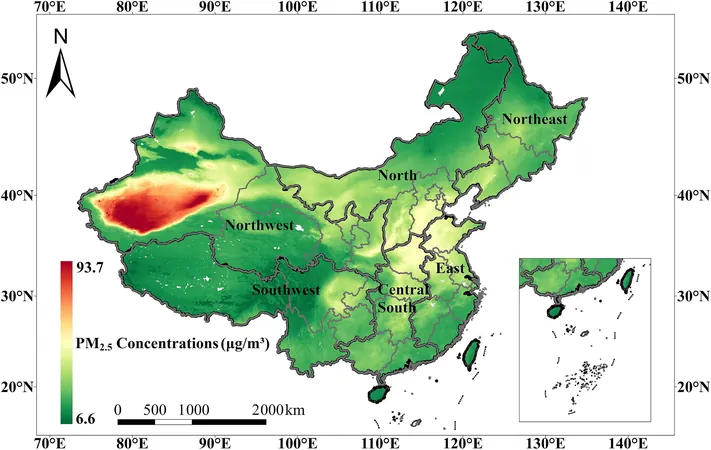
Unlocking Air Quality: Groundbreaking Study Maps PM2.5 Movement Across China
2025-08-27
Author: Olivia
Revolutionary Research Reveals Pollution Pathways
In an exciting breakthrough, researchers from the Aerospace Information Research Institute of the Chinese Academy of Sciences have published a study in *Geoscience Frontiers* that maps the long-term transport pathways of PM2.5 pollution across China from 2000 to 2021. This pioneering research equips policymakers with vital insights to enhance national air quality management strategies.
Dynamic Time Warping: A Game Changer for Air Quality Analysis
Utilizing a cutting-edge framework based on the Dynamic Time Warping (DTW) method, the study offers a fresh perspective on how air pollutants cross regional boundaries over two decades. This novel approach is shedding light on the evolution of PM2.5 transport patterns throughout the nation.
Regional Insights: The Statistics Behind PM2.5 Movement
The analysis unveiled fascinating regional differences in PM2.5 transport activity. Northwest China emerges as the hotspot, accounting for a staggering 34% of identified transport pathways, followed closely by the Southwest at 22%, and the North at 21%. The Northeast contributes 10%, while other regions show isolated cases.
A Shift in Trends: The 2013 Turning Point
Significantly, the research indicates a sharp decline in PM2.5 transport pathways after 2013, mirroring a notable drop in the annual average PM2.5 concentrations during that period. This correlation suggests effective measures may finally be taking effect.
Personalized Analysis Without the Complexity
Unlike traditional chemical transport models that depend on intricate meteorological and emission data, the DTW framework operates on a more straightforward, data-driven approach. This method adeptly captures PM2.5 pathways while maintaining strong agreement with established models, proving invaluable for areas with limited air quality monitoring.
Empowering Pollution Management: A New Era
This groundbreaking research highlights the power of Big Earth Data in unveiling long-term pollution patterns that are often missed by conventional methods. Liu Yiming, the study's first author, emphasizes, "Understanding how pollutants move across regions enables us to develop targeted strategies for safeguarding air quality and public health."









 Brasil (PT)
Brasil (PT)
 Canada (EN)
Canada (EN)
 Chile (ES)
Chile (ES)
 Česko (CS)
Česko (CS)
 대한민국 (KO)
대한민국 (KO)
 España (ES)
España (ES)
 France (FR)
France (FR)
 Hong Kong (EN)
Hong Kong (EN)
 Italia (IT)
Italia (IT)
 日本 (JA)
日本 (JA)
 Magyarország (HU)
Magyarország (HU)
 Norge (NO)
Norge (NO)
 Polska (PL)
Polska (PL)
 Schweiz (DE)
Schweiz (DE)
 Singapore (EN)
Singapore (EN)
 Sverige (SV)
Sverige (SV)
 Suomi (FI)
Suomi (FI)
 Türkiye (TR)
Türkiye (TR)
 الإمارات العربية المتحدة (AR)
الإمارات العربية المتحدة (AR)